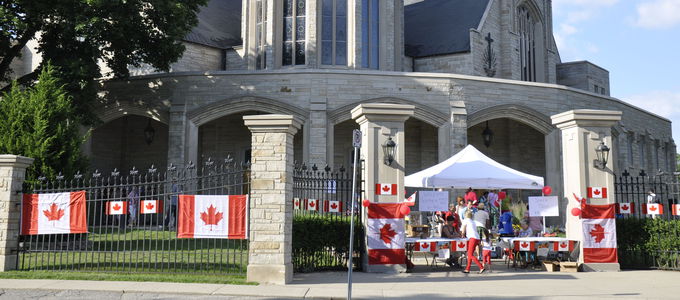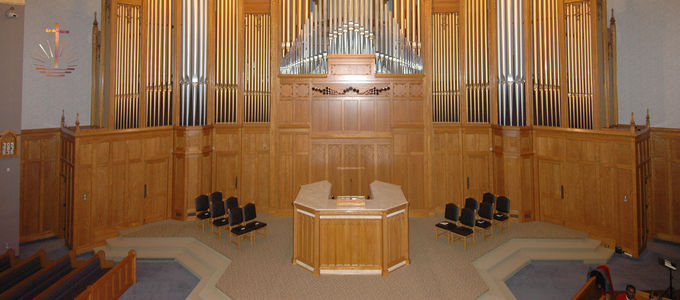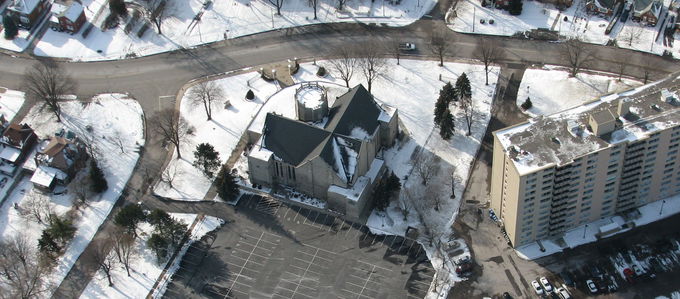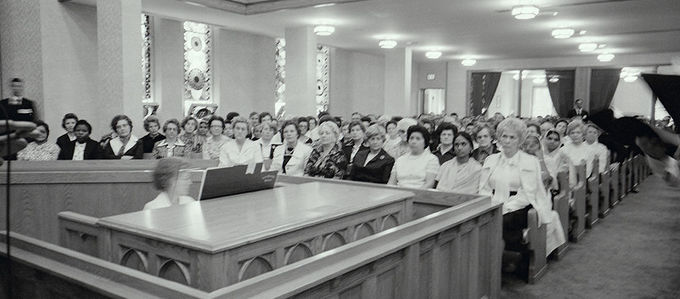
Kitchener Central is the name of the church where Chief Apostle Jean-Luc Schneider will conduct a divine service in Canada this weekend. The building is relatively unique in the New Apostolic architectural landscape – and conceals historical backgrounds that are not obvious at first glance.
Anyone seeing this church for the first time will certainly be reminded of a fortress or a cathedral. This is no coincidence. This is because Kitchener Central was built in the Neo-Gothic style (also known as Gothic Revival), an architectural genre that picks up on style elements from the Middle Ages and combines them in a new way.
Design from England
This variant of architectural art became fashionable in the middle of the eighteenth century in England. Its most prominent representatives include Westminster Palace in London (also known as the “Houses of Parliament”), with the world renowned tower, “Big Ben”.
The Catholic Apostolic congregations, from which the New Apostolic Church emerged, also constructed buildings in this style. And the Catholic Apostolic central church in London was not the only one to follow these blueprints. The Catholic Apostolic church building in Berlin-Tiergarten did so as well. The trend spilled over into North America with the construction of the first skyscrapers in New York and Chicago between 1910 and 1920.
Sandstone and tracery
It was in this fashion that Kitchener Central was constructed by the regional architectural team “Rieder & Hymmen”, who later also erected the city’s theatre and concert centre. According to the daily newspaper known as the “Kitchener-Waterloo Record”, the church building cost approximately 1.75 million Canadian dollars at the time. Typical Neo-Gothic features of the sandstone construction include geometric patterns carved as stone profiles around the windows. This is known as “tracery”.
Kitchener Central was dedicated in November 1974. With an area of some 4,500 square metres, the church offers seating for around 1,100, including the balconies. The church organ boasts approximately 3,100 pipes arranged in 43 registers. Behind the building there is a patio that includes barbecue facilities—a necessity for cultivating fellowship.
Equipped with state-of-the-art technology
Since its dedication the church has undergone some changes: in 1996 an elevator was installed, and an orchestra pit was incorporated in 2000. Today the building comes equipped with modern audio, lighting, and video technology, along with a central control room for live transmissions of divine services and concerts.
However, Kitchener Central is far from the largest church building in the New Apostolic world. The largest such building is located in Africa, namely in Cape Town. It has two levels of balconies and offers seating for more than 4,000 people. The emblem of our Church is depicted on its roof, and is visible from afar, whether in the air orvia google earth.
An iconic landmark
Kitchener Central lost a similar identifier some years ago, namely a rotating Church emblem on the roof of the tower, which was almost as tall as the tower itself. It was dismantled at the turn of the millennium, in the year 2000. Over the years it became iconic. To this day, the people of the city still remember the church with the rotating cross.






















